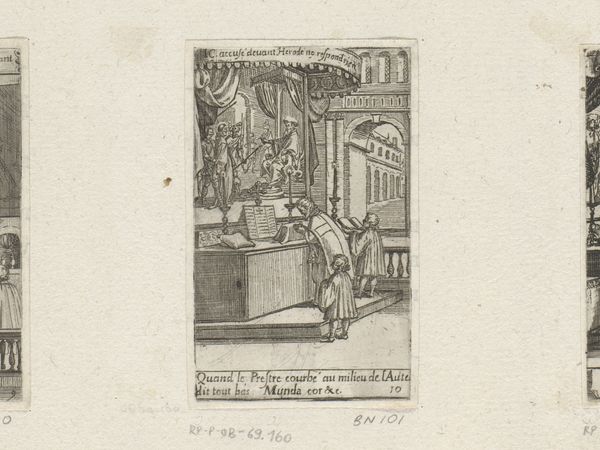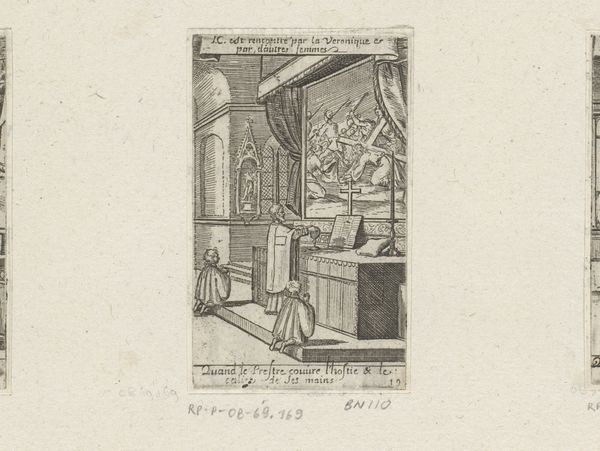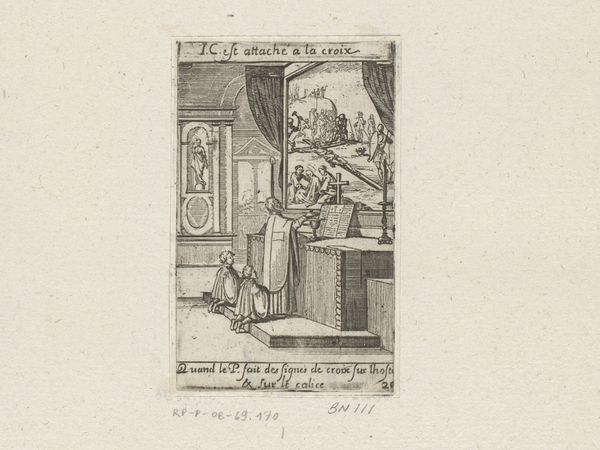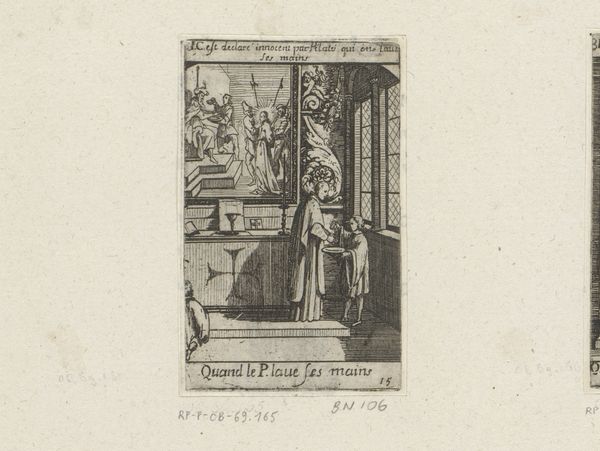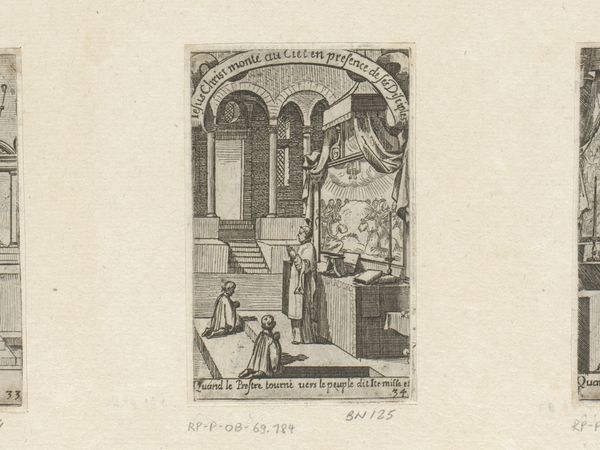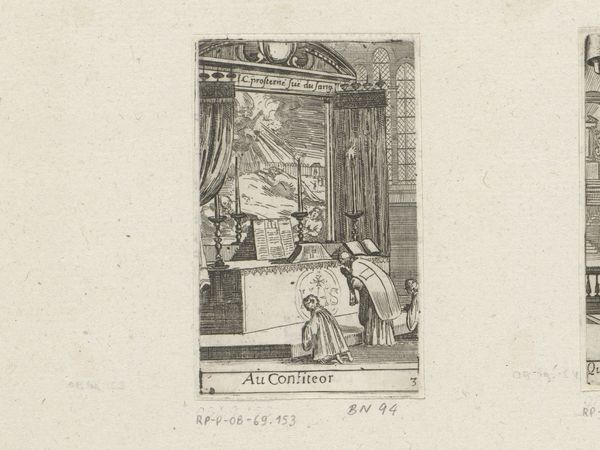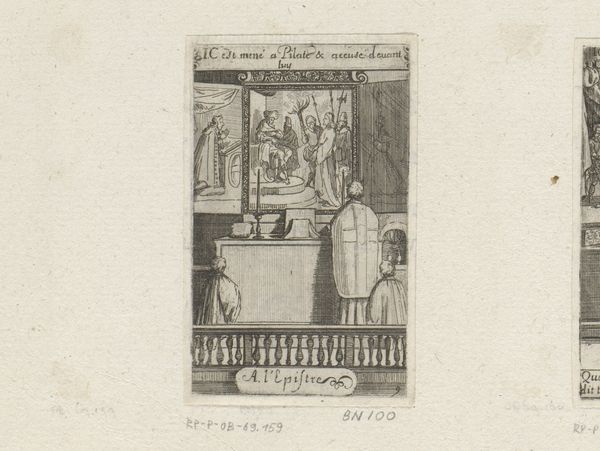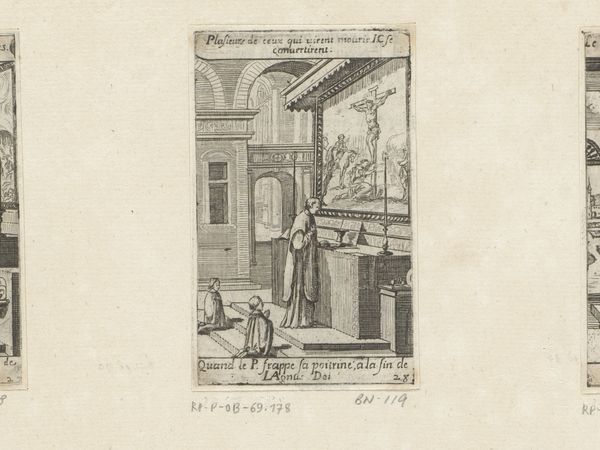
print, engraving
#
baroque
# print
#
figuration
#
line
#
history-painting
#
engraving
Dimensions: height 84 mm, width 52 mm
Copyright: Rijks Museum: Open Domain
Editor: Here we have Sé́bastien Leclerc I's 1661 engraving, “Priester met hostie en twee misdienaars voor een altaar,” or “Priest with Host and Two Acolytes Before an Altar." It’s incredibly detailed despite its small size, but there's something solemn about the scene. What do you see in this piece that I might be missing? Curator: What I find particularly striking is how Leclerc uses this intimate religious scene to engage with broader socio-political themes prevalent in 17th-century Europe. The priest's ritual is not just a moment of personal piety, but a performance of power within a society deeply structured by religious institutions. Editor: Performance of power? Curator: Consider the setting—the altar, the vestments, the hierarchical arrangement of figures. All visually assert the Church's authority. Look also at the small image behind the priest, illustrating Christ being flagellated; it makes the connection of holy rite with persecution, reflecting contemporary power struggles. And, significantly, the dominance of the male figures in the sacred space and in Leclerc's print contributes to the ongoing narrative of gendered power dynamics. Editor: I see. It's more than just a depiction of a religious ceremony, it's about how religion was used as a tool. Curator: Exactly. The artist compels us to examine how such imagery reinforces existing social hierarchies and beliefs. The visual is an act of upholding dominant views in gender, politics and faith. It allows one to consider the cultural impact of religion on those of marginalized communities. Editor: This gives me so much to think about. I never considered how the visual space itself can be a statement of power. Curator: Art constantly converses with the context it was born in. I am now eager to find examples in art made after the Baroque period.
Comments
No comments
Be the first to comment and join the conversation on the ultimate creative platform.
